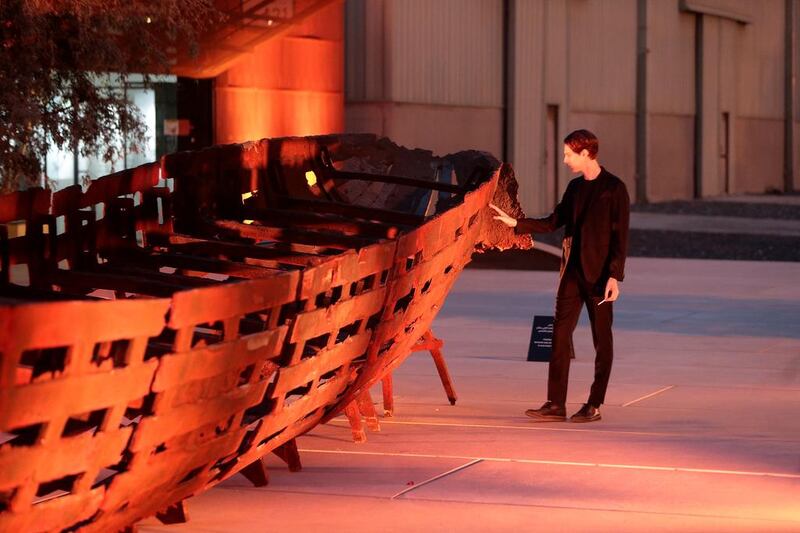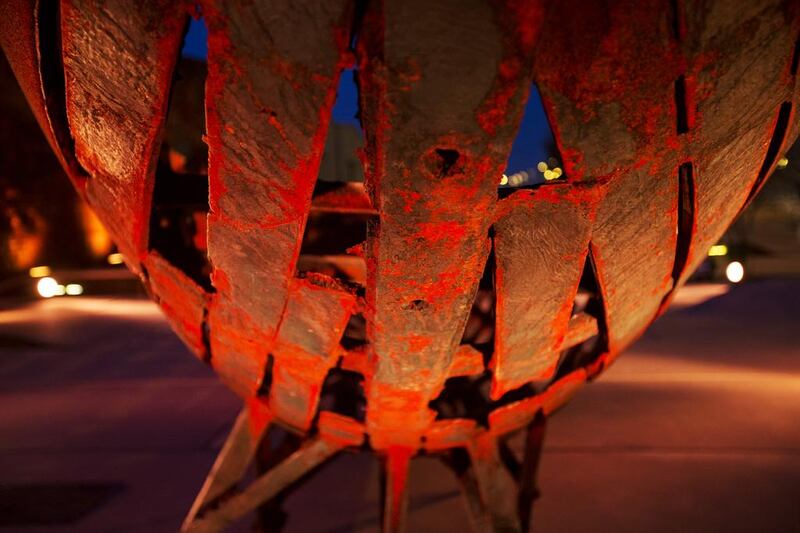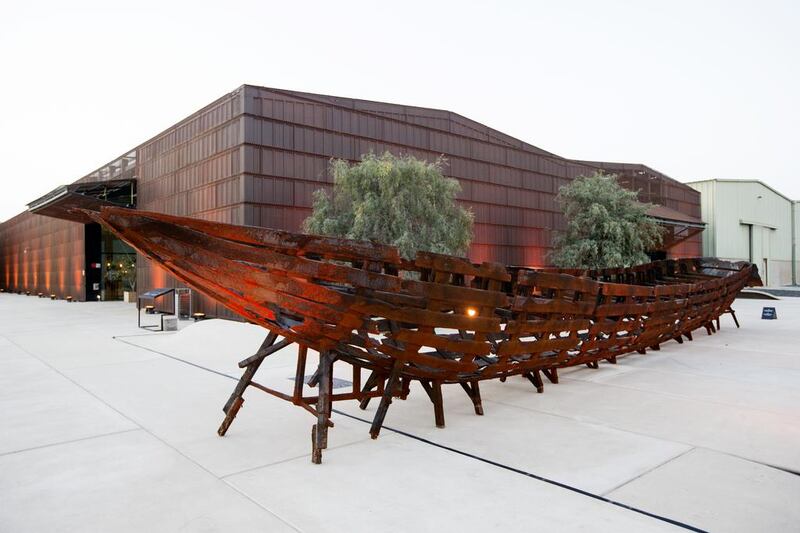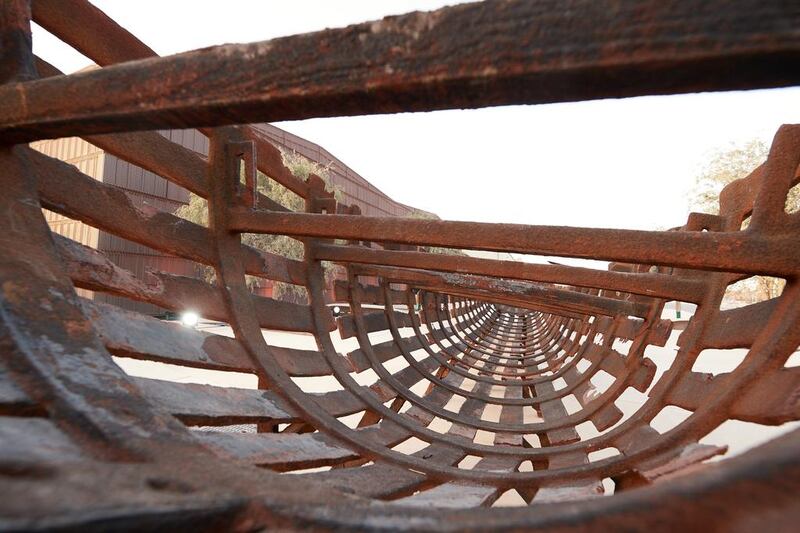There’s nothing unusual about the sight of an abandoned hulk in the dhow yard of Mina Zayed, but the basket-like hull that now sits outside Warehouse421 is something of a paradox.
At first sight, nothing could appear more quintessentially boat-like than the fractured collection of beams, ribs and gunwhales that make up this particular wreck, but a closer inspection reveals an object that could hardly be less seaworthy. Made from nodular iron sections that were cast in a vast, sand-filled mould in a now defunct Spanish foundry, the 18 metre-long Departure rusts rather than decays and would sink the moment it hit the water.
“You cannot call it the perfect boat, because it would never float and you would never go anywhere,” says Xavier Mascaró, the Spanish sculptor responsible for the installation.
“But in my mind it is something that is reduced to an essential shape, like the skeleton of a boat, which is also about absence and presence,” he explains.
"I wanted something that can, how do you say it in English, acoger, that presence?"
A Spanish word that combines the notion of welcome with a sense of accommodation or a form of embrace, Mascaró's use of the word acoger draws a line between his impractical but intellectually "perfect" boats and the ritual vessels that served as receptacles for the souls of the ancients.
Pictures of these ceremonial boats, from ancient Egypt and Greece to Phoenicia and Colombia in South America form a part of a wider exhibition, also called Departure, which opened at Warehouse421 last week.
The show also includes a flotilla of 26 smaller iron and bronze boats, apparently frozen mid-voyage, and two exhibition spaces, one of which is dedicated to Mascaró’s working processes and the other includes old photographs, quotes and poems that recollect and reflect on local maritime traditions.
If the links drawn between the worlds of contemporary art, ancient Egypt and coastal life as it was lived in the Emirates sounds like an exercise in intellectual acrobatics, it makes sense in the immediate context of Mina Zayed and Warehouse421.
“There are not many places as significant as this one for showing these installations. The boat here is a symbol of how people lived, moved and traded, and also of the country’s evolution and it’s still here,” says Mascaró.
“You can still see the old ships and the harbour and the fish market. In other places there might be a different reading, but here there is a dialogue because the atmosphere is almost the same.”
If Departure's unspoken themes of exodus and abandonment echo current international concerns about the fate of refugees, it also raises questions about the role of the UAE's past in its present and the fate of traditions such as pearl diving – now dying or dead – that are still cherished and remembered.
One approach has been to preserve the fast-disappearing past, in the form of craft practices such as sadu and khoos weaving, at festivals and in heritage villages, using people who are old and skilled enough to give demonstrations.
But as a panel of speakers explained at The Future is Handmade, a discussion held at Abu Dhabi Art in 2012, such an approach represents a form of cultural surrender.
“The intention is not to ensure a nostalgic fossilisation of specific forms,” the event’s programme explained. “But rather to find ways to reenergise those forms in ways that embrace the aesthetic and practical needs of the future.”
Another response is the one employed by the Sougha initiative, a Khalifa Fund for Enterprise Development programme that encourages Emirati artisans to use traditional skills, such as sadu weaving, to create products aimed at the modern market.
Departure seems to represent a different approach to the same issue. As the curatorial team at Warehouse421 are ready to admit, their selection of Mascaró for their latest exhibition stems from the links that can be drawn between his work and the recent history of the UAE, but the results are far from fossilised.
By using the past as a lens through which to explore the present, the exhibition shows that it is possible to achieve results that are modern and thought-provoking, both locally and internationally.
The effect is best illustrated by one of Mascaró’s smallest and newest works in the show, a glazed ceramic toy-sized boat the sculptor made with the help of Mexican artisans.
The only craft in the exhibition that is populated with figures, the sculpture recalls pre-Columbian votive sculptures such as the precious Muisca Raft from Bogota, Colombia, and blends the past with the present in a way that avoids nostalgia or pastiche.
There are lessons to be learned here and although the results may appear to be foreign the impact will be enduring and local if the team at Warehouse421 have their way.
• Departure runs at Warehouse421 until September 4. For more details visit www.warehouse421.ae
Nick Leech is a feature writer at The National.








